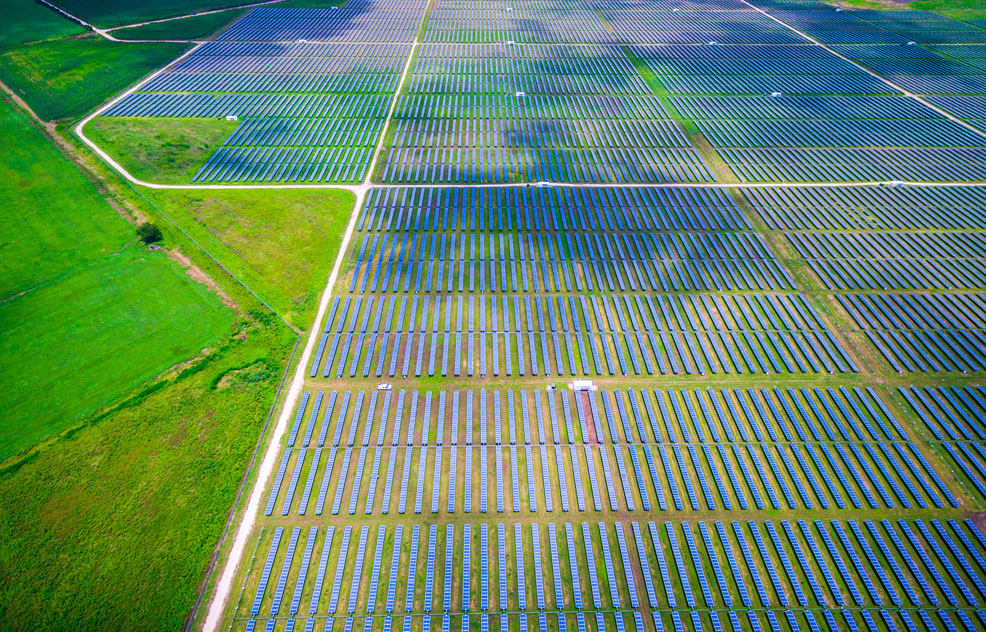
24th March 2022 Solar power reaches 1 TW milestone The worldwide installed capacity of solar power has reached 1 terawatt (TW) this month, based on a new analysis of data from Bloomberg New Energy Finance (BNEF).
The first solar cells became commercially available in the 1950s, mainly in the United States. They had low efficiency and extremely high costs. Amid the oil crisis of the 1970s, Jimmy Carter famously installed solar panels on the White House (later removed by Reagan) to promote alternative sources of energy. As more and more research went into solar power, its cost plummeted. From nearly $80/watt during Carter's presidency, it fell to just $3/watt by the end of the 20th century and continued to trend downwards. Today, the global average price for a solar photovoltaic (PV) module is less than 30 cents per watt – far lower than predicted in earlier forecasts by the International Energy Agency (IEA) and other institutions. Research-cell efficiencies have grown from 15% in the 1970s for crystalline silicon cells to nearly 50% for today's multi-junction cells based on the latest nanotechnology. Like electric vehicles – traditionally seen as expensive and niche – solar power is now becoming a realistic option for many households, as well as businesses wishing to decarbonise their operations. While the upfront costs of installing a photovoltaic (PV) rooftop system can be expensive, home solar will usually pay for itself within 5-10 years – and then provides the owner with an essentially free, limitless supply of clean energy, decentralised and unaffected by price volatility. Unlike the world's increasingly scarce, finite supplies of coal, oil and gas, our Sun will continue to shine for another five billion years. Home solar can also be combined with batteries (which, like solar, are rapidly declining in cost) for energy storage at night. At the utility scale, gigantic solar projects are now emerging in many countries. Recent years have seen the first gigawatt-scale (GW) facilities. The largest has a nameplate capacity of 2.3 GW. China is the world leader, accounting for 30% of all solar electric generation, followed by Europe (21%) and then the USA (16%). The vast majority is produced from PV modules, with a small fraction obtained by concentrated solar power (using mirrors or lenses to concentrate a large area of sunlight onto a receiver). Following decades of rapid growth, the worldwide installed capacity of solar power has passed 1 TW this month, according to PV Magazine, an international trade publication headquartered in Berlin, Germany. The magazine has based its analysis on data from Bloomberg New Energy Finance (BNEF). Global solar capacity stood at 788 GW at the end of 2020, with a further 183 GW added in 2021, for a total of 971 GW. Based on the current trend, it can be estimated that we passed the 1,000 GW milestone on 15th March 2022. PV Magazine notes two caveats for obtaining such a precise date, such as the possible overestimation resulting from a small percentage of capacity being uninstalled (e.g. roofs do sometimes get replaced, and severe weather events can occasionally destroy installations). Underestimation is also possible, since the installation data that researchers seek is constantly changing and obtained from different manufacturers all over the world. Looking to the future, dozens of terawatts of solar capacity will be needed to decarbonise the world's electricity, transportation, heating, and other needs. However, disruptive technologies tend to surprise us – producing outcomes more quickly than expected – and solar is one such technology. The IEA, for example, consistently underestimates the growth of solar in each of its annual forecasts. Bloomberg NEF estimates that solar power will account for 20% of the energy mix by 2040, which may also prove to be a conservative prediction. In addition to larger scales and improved efficiencies, new innovations likely to be mainstream in the near future include transparent solar cells for installation in windows and even wearable devices, such as eyeglasses. Space-based solar power is another area with massive potential, offering the ability to capture sunlight 24 hours a day.
Comments »
If you enjoyed this article, please consider sharing it:
|







